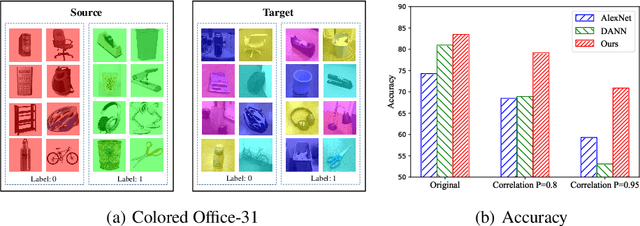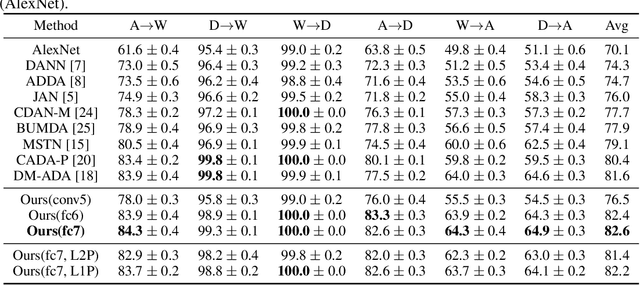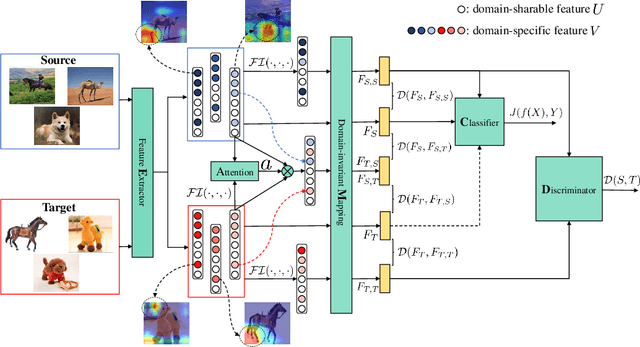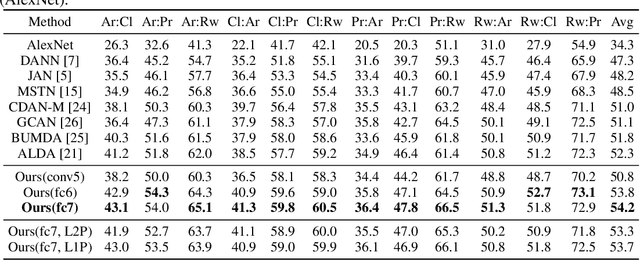Zenan Huang
Many-to-Many Matching via Sparsity Controlled Optimal Transport
Mar 31, 2025Abstract:Many-to-many matching seeks to match multiple points in one set and multiple points in another set, which is a basis for a wide range of data mining problems. It can be naturally recast in the framework of Optimal Transport (OT). However, existing OT methods either lack the ability to accomplish many-to-many matching or necessitate careful tuning of a regularization parameter to achieve satisfactory results. This paper proposes a novel many-to-many matching method to explicitly encode many-to-many constraints while preventing the degeneration into one-to-one matching. The proposed method consists of the following two components. The first component is the matching budget constraints on each row and column of a transport plan, which specify how many points can be matched to a point at most. The second component is the deformed $q$-entropy regularization, which encourages a point to meet the matching budget maximally. While the deformed $q$-entropy was initially proposed to sparsify a transport plan, we employ it to avoid the degeneration into one-to-one matching. We optimize the objective via a penalty algorithm, which is efficient and theoretically guaranteed to converge. Experimental results on various tasks demonstrate that the proposed method achieves good performance by gleaning meaningful many-to-many matchings.
Iterative Tree Analysis for Medical Critics
Jan 18, 2025Abstract:Large Language Models (LLMs) have been widely adopted across various domains, yet their application in the medical field poses unique challenges, particularly concerning the generation of hallucinations. Hallucinations in open-ended long medical text manifest as misleading critical claims, which are difficult to verify due to two reasons. First, critical claims are often deeply entangled within the text and cannot be extracted based solely on surface-level presentation. Second, verifying these claims is challenging because surface-level token-based retrieval often lacks precise or specific evidence, leaving the claims unverifiable without deeper mechanism-based analysis. In this paper, we introduce a novel method termed Iterative Tree Analysis (ITA) for medical critics. ITA is designed to extract implicit claims from long medical texts and verify each claim through an iterative and adaptive tree-like reasoning process. This process involves a combination of top-down task decomposition and bottom-up evidence consolidation, enabling precise verification of complex medical claims through detailed mechanism-level reasoning. Our extensive experiments demonstrate that ITA significantly outperforms previous methods in detecting factual inaccuracies in complex medical text verification tasks by 10%. Additionally, we will release a comprehensive test set to the public, aiming to foster further advancements in research within this domain.
MCA: Moment Channel Attention Networks
Mar 04, 2024Abstract:Channel attention mechanisms endeavor to recalibrate channel weights to enhance representation abilities of networks. However, mainstream methods often rely solely on global average pooling as the feature squeezer, which significantly limits the overall potential of models. In this paper, we investigate the statistical moments of feature maps within a neural network. Our findings highlight the critical role of high-order moments in enhancing model capacity. Consequently, we introduce a flexible and comprehensive mechanism termed Extensive Moment Aggregation (EMA) to capture the global spatial context. Building upon this mechanism, we propose the Moment Channel Attention (MCA) framework, which efficiently incorporates multiple levels of moment-based information while minimizing additional computation costs through our Cross Moment Convolution (CMC) module. The CMC module via channel-wise convolution layer to capture multiple order moment information as well as cross channel features. The MCA block is designed to be lightweight and easily integrated into a variety of neural network architectures. Experimental results on classical image classification, object detection, and instance segmentation tasks demonstrate that our proposed method achieves state-of-the-art results, outperforming existing channel attention methods.
Energy-based Automated Model Evaluation
Jan 25, 2024



Abstract:The conventional evaluation protocols on machine learning models rely heavily on a labeled, i.i.d-assumed testing dataset, which is not often present in real world applications. The Automated Model Evaluation (AutoEval) shows an alternative to this traditional workflow, by forming a proximal prediction pipeline of the testing performance without the presence of ground-truth labels. Despite its recent successes, the AutoEval frameworks still suffer from an overconfidence issue, substantial storage and computational cost. In that regard, we propose a novel measure -- Meta-Distribution Energy (MDE) -- that allows the AutoEval framework to be both more efficient and effective. The core of the MDE is to establish a meta-distribution statistic, on the information (energy) associated with individual samples, then offer a smoother representation enabled by energy-based learning. We further provide our theoretical insights by connecting the MDE with the classification loss. We provide extensive experiments across modalities, datasets and different architectural backbones to validate MDE's validity, together with its superiority compared with prior approaches. We also prove MDE's versatility by showing its seamless integration with large-scale models, and easy adaption to learning scenarios with noisy- or imbalanced- labels. Code and data are available: https://github.com/pengr/Energy_AutoEval
Towards Domain-Specific Features Disentanglement for Domain Generalization
Oct 04, 2023Abstract:Distributional shift between domains poses great challenges to modern machine learning algorithms. The domain generalization (DG) signifies a popular line targeting this issue, where these methods intend to uncover universal patterns across disparate distributions. Noted, the crucial challenge behind DG is the existence of irrelevant domain features, and most prior works overlook this information. Motivated by this, we propose a novel contrastive-based disentanglement method CDDG, to effectively utilize the disentangled features to exploit the over-looked domain-specific features, and thus facilitating the extraction of the desired cross-domain category features for DG tasks. Specifically, CDDG learns to decouple inherent mutually exclusive features by leveraging them in the latent space, thus making the learning discriminative. Extensive experiments conducted on various benchmark datasets demonstrate the superiority of our method compared to other state-of-the-art approaches. Furthermore, visualization evaluations confirm the potential of our method in achieving effective feature disentanglement.
Latent Processes Identification From Multi-View Time Series
May 14, 2023Abstract:Understanding the dynamics of time series data typically requires identifying the unique latent factors for data generation, \textit{a.k.a.}, latent processes identification. Driven by the independent assumption, existing works have made great progress in handling single-view data. However, it is a non-trivial problem that extends them to multi-view time series data because of two main challenges: (i) the complex data structure, such as temporal dependency, can result in violation of the independent assumption; (ii) the factors from different views are generally overlapped and are hard to be aggregated to a complete set. In this work, we propose a novel framework MuLTI that employs the contrastive learning technique to invert the data generative process for enhanced identifiability. Additionally, MuLTI integrates a permutation mechanism that merges corresponding overlapped variables by the establishment of an optimal transport formula. Extensive experimental results on synthetic and real-world datasets demonstrate the superiority of our method in recovering identifiable latent variables on multi-view time series.
Discriminative Radial Domain Adaptation
Jan 01, 2023Abstract:Domain adaptation methods reduce domain shift typically by learning domain-invariant features. Most existing methods are built on distribution matching, e.g., adversarial domain adaptation, which tends to corrupt feature discriminability. In this paper, we propose Discriminative Radial Domain Adaptation (DRDR) which bridges source and target domains via a shared radial structure. It's motivated by the observation that as the model is trained to be progressively discriminative, features of different categories expand outwards in different directions, forming a radial structure. We show that transferring such an inherently discriminative structure would enable to enhance feature transferability and discriminability simultaneously. Specifically, we represent each domain with a global anchor and each category a local anchor to form a radial structure and reduce domain shift via structure matching. It consists of two parts, namely isometric transformation to align the structure globally and local refinement to match each category. To enhance the discriminability of the structure, we further encourage samples to cluster close to the corresponding local anchors based on optimal-transport assignment. Extensively experimenting on multiple benchmarks, our method is shown to consistently outperforms state-of-the-art approaches on varied tasks, including the typical unsupervised domain adaptation, multi-source domain adaptation, domain-agnostic learning, and domain generalization.
Interventional Domain Adaptation
Nov 07, 2020



Abstract:Domain adaptation (DA) aims to transfer discriminative features learned from source domain to target domain. Most of DA methods focus on enhancing feature transferability through domain-invariance learning. However, source-learned discriminability itself might be tailored to be biased and unsafely transferable by spurious correlations, \emph{i.e.}, part of source-specific features are correlated with category labels. We find that standard domain-invariance learning suffers from such correlations and incorrectly transfers the source-specifics. To address this issue, we intervene in the learning of feature discriminability using unlabeled target data to guide it to get rid of the domain-specific part and be safely transferable. Concretely, we generate counterfactual features that distinguish the domain-specifics from domain-sharable part through a novel feature intervention strategy. To prevent the residence of domain-specifics, the feature discriminability is trained to be invariant to the mutations in the domain-specifics of counterfactual features. Experimenting on typical \emph{one-to-one} unsupervised domain adaptation and challenging domain-agnostic adaptation tasks, the consistent performance improvements of our method over state-of-the-art approaches validate that the learned discriminative features are more safely transferable and generalize well to novel domains.
 Add to Chrome
Add to Chrome Add to Firefox
Add to Firefox Add to Edge
Add to Edge